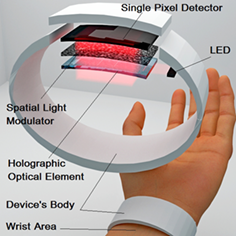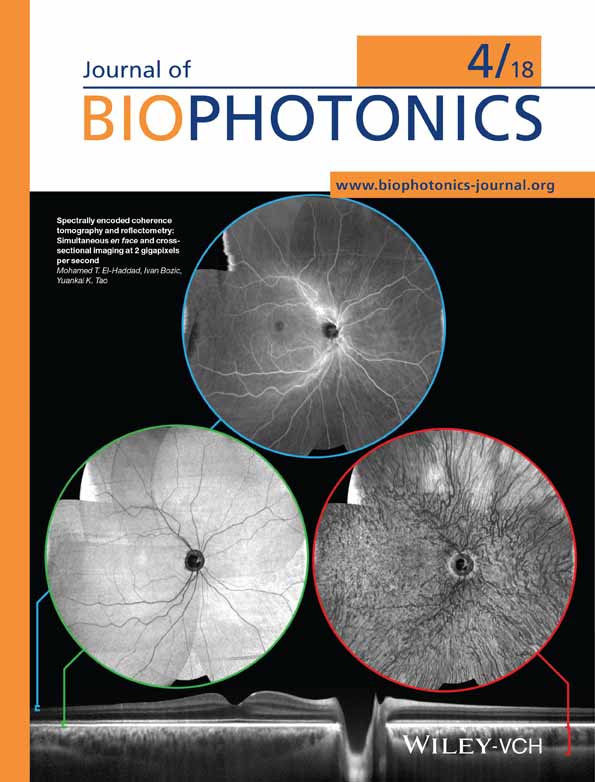Compressed sensing approach for wrist vein biometrics
Abstract
The work describes features of the compressed sensing (CS) approach utilized for development of a wearable system for wrist vein recognition with single-pixel detection; we consider this system useful for biometrics authentication purposes. The CS approach implies use of a spatial light modulation (SLM) which, in our case, can be performed differently—with a liquid crystal display or diffusely scattering medium. We show that compressed sensing combined with above-mentioned means of SLM allows us to avoid using an optical system—a limiting factor for wearable devices. The trade-off between the 2 different SLM approaches regarding issues of practical implementation of CS approach for wrist vein recognition purposes is discussed. A possible solution of a misalignment problem—a typical issue for imaging systems based upon 2D arrays of photodiodes—is also proposed. Proposed design of the wearable device for wrist vein recognition is based upon single-pixel detection.





